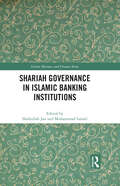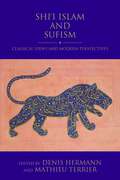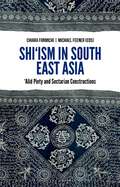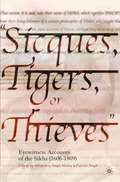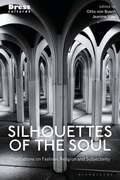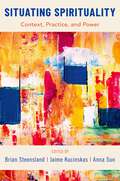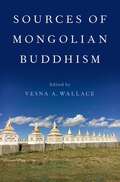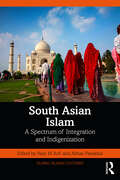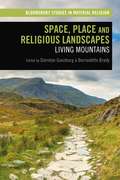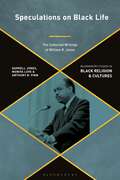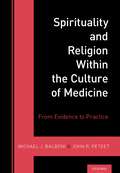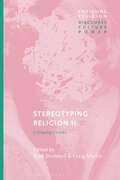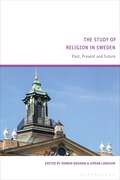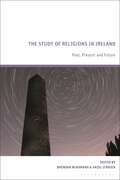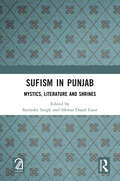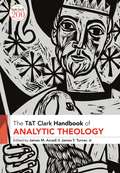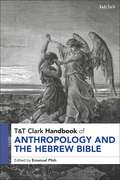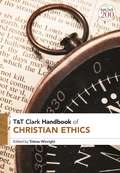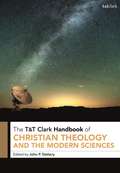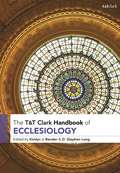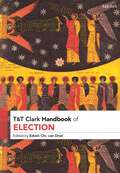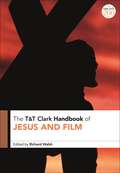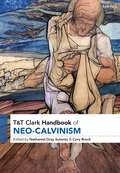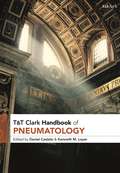- Table View
- List View
Shariah Governance in Islamic Banking Institutions (Islamic Business and Finance Series)
Shariah governance assumes the primary instrument through which Islamic Banking Institutions (IBIs) ensure the Islamicity of their products, services, operations, and internal environments. It is considered to be one the fundamental elements that differentiates IBIs from their traditional counterparts. Shariah Governance in Islamic Banking Institutions provides a critical overview of the key aspects pertaining to Shariah governance within Islamic financial institutions and presents a detailed analysis of its conceptual background. The authors have identified the unique issues that have emerged due to the integration of Shariah, namely the involvement of the Shariah supervisory board (SSB), in the corporate governance arrangements of Islamic banks. These issues relate to disclosure, transparency, independency, consistency, confidentiality, competency, and reputation. The book details the doctrines of Shariah pronouncements in Islamic banks, the importance of having a central advisory board at a regulatory level in the standardization of Islamic banking practices, as well as the competence required for Shariah supervisory board members. It provides a critical analysis of the Shariah governance framework in Pakistan and introduces the authors’ vision of an ideal Shariah governance framework. Furthermore, the chapters offer guidance in promoting effective policies for improving Shariah governance. This is one of the core challenges facing Islamic banks, namely, to ensure compliance with faith and provide legitimacy to the business of IBIs, and as such, the book will appeal to both the research and professional communities.
Shi'i Islam and Sufism: Classical Views and Modern Perspectives (Shi'i Heritage Series)
Offering new perspectives on the relationship between Shi'is and Sufis in modern and pre-modern times, this book challenges the supposed opposition between these two esoteric traditions in Islam by exploring what could be called "Shi'i Sufism" and "Sufi-oriented Shi'ism" at various points in history. The chapters are based on new research in textual studies as well as fieldwork from a broad geographical areas including the Indian subcontinent, Anatolia and Iran. Covering a long period stretching from the early post-Mongol centuries, throughout the entire Safawid era (906–1134/1501–1722) and beyond, it is concerned not only with the sphere of the religious scholars but also with different strata of society. The first part of the volume looks at the diversity of the discourse on Sufism among the Shi'i "ulama" in the run up to and during the Safawid period. The second part focuses on the social and intellectual history of the most popular Shi'i Sufi order in Iran, the Ni'mat Allahiyya. The third part examines the relationship between Shi'ism and Sufism in the little-explored literary traditions of the Alevi-Bektashi and the Khaksariyya Sufi order. With contributions from leading scholars in Shi'ism and Sufism Studies, the book is the first to reveal the mutual influences and connections between Shi'ism and Sufism, which until now have been little explored.
Shi'ism In South East Asia: Alid Piety and Sectarian Constructions
This is the first work available in any language to extensively document and critically discuss traditions of 'Alid piety and their modern contestations in the region. The concept of 'Alid piety allows for a reframing of our views on the widespread reverence for 'Ali, Fatima and their progeny that emphasizes how such sentiments and associated practices are seen as part of broad traditions shared by many Muslims, which might or might not have their origins in a specifically Shi'a identity. In doing so, it facilitates the movement of academic discussions out from under the shadow of polemical sectarian discourses on 'Shi'ism' in Southeast Asia. The chapters include presentations of new material from previously unpublished early manuscript sources from Muslim vernacular literatures in the Malay, Javanese, Sundanese, Acehnese and Bugis languages, as well as rich new ethnography from across the region. These studies engage with cultural, intellectual, and performative traditions, as well as the ways in which 'Alid piety has been transformed in relation to more strictly sectarian identifications since the Iranian revolution in 1979.
Sicques, Tigers or Thieves: Eyewitness Accounts of the Sikhs (1606-1810)
In 1812, Sir John Malcolm, a Lieutenant General in the British Army wrote A Sketch of the Sikhs , commonly believed to be the first account of the Sikhs written by a non-Sikh. In truth, soldiers, travellers, diplomats, missionaries and scholars had provided accounts for many years before. Drawing on this difficult-to-access material, the editors of this volume have compiled a unique source that offers a fascinating insight into the early developments in Sikh history. From the first ever written accounts of the Sikhs by Persian chroniclers of the Moghul Emperor to the travel diary of an Englishwoman, this volume contains material invaluable to those studying the evolution of the Sikh religion as well as to those interested in learning more about this major religion. It also provides an unparalleled look into the growth and solidification of the religious practices of Sikhs. At a time when the misunderstanding of the Sikh religion and those who practise it has reached new and deadly heights, this volume hopes to introduce a wider audience to the roots of its culture. For more detailed information, including examples of illustrations, and selected extracts, go to www.sicques.com
Silhouettes of the Soul: Meditations on Fashion, Religion, and Subjectivity (Dress Cultures)
What is the relationship between the soul, or inner life, and what we wear in the making of identity and belief? What bearing do religious and political belonging, respectability, and resistance have on the way in which we dress? Why have more traditional religious practices been so prescriptive about body adornment? Historically, fashionable dress and religion have been positioned as polar opposites. Silhouettes of the Soul brings them together, placing them in conversation with each other. By moving beyond traditional, social scientific, and historical analysis of religious attire and adornment the book presents a variety of disciplinary approaches from across regional, social, and religious locations.Contentious and challenging, as well as academically rigorous, the book's diverse range of contributors - from fashion and religious studies scholars, to designers, activists, monastics, and journalists - explore the relationship between religion and fashion, extending the meanings and possibilities of both dress and spirituality. Combining interviews and personal stories with more traditional theoretical analysis, Silhouettes of the Soul offers new ways of looking at the relationship between religion, personal convictions, and self-expression - our sense of self and our sense of fashion.
Situating Spirituality: Context, Practice, and Power
Spirituality is in the spotlight. While levels of religious belief and observance are declining in much of the Western world, the number of people who identify as "spiritual but not religious" is on the rise. Practices such as yoga, meditation, and pilgrimage are surging in popularity. "Wellness" regimes offer practitioners a lexicon of spirituality and an array of spiritual experiences. Commentators talk of a new spiritual awakening "after religion." And global mobility is generating hybrid practices that blur the lines between religion and spirituality. The essays collected in Situating Spirituality: Context, Practice, and Power examine not only individual engagements with spirituality, but they show how seemingly personal facets of spirituality, as well as definitions of spirituality itself, are deeply shaped by religious, cultural, and political contexts. The volume is explicitly cross-national and comparative. The contributors are leading scholars of major global regions: North America, Central America, East Asia, South Asia, Africa and the African Diaspora, Western Europe, and the Middle East. They study not only Christian, Jewish, and Islamic societies, but also non-Abrahamic societies with native as well as transnational sacred traditions.
Sources of Mongolian Buddhism
Despite Mongolia's centrality to East Asian history and culture, Mongols themselves have often been seen as passive subjects on the edge of the Qing formation or as obedient followers of so-called "Tibetan Buddhism," peripheral to major literary, religious, and political developments. But in fact Mongolian Buddhists produced multi-lingual and genre-bending scholastic and ritual works that profoundly shaped historical consciousness, community identification, religious knowledge, and practices in Mongolian lands and beyond. In Sources of Mongolian Buddhism, a team of leading Mongolian scholars and authors have compiled a collection of original Mongolian Buddhist works--including ritual texts, poetic prayers and eulogies, legends, inscriptions, and poems--for the first time in any European language.
South Asian Islam: A Spectrum of Integration and Indigenization (Global Islamic Cultures)
This volume explores the historical trajectory of the spread of Islam in South Asia and how the engagements of the past have played a crucial role in the making of the present outfits of South Asian Islam. Islam in South Asia has maintained a distinct role while imbibing cultural, social, ethnic, folk, and artistic networks of the subcontinent in diverse echelons. In an unequivocal analysis, this volume showcases the visible varieties of Islam from an array of regional cultural, ethnic, and vernacular groups. While many characteristics remain distinct in different provinces or regions of South Asia, similarities are palpable in etiquettes, customary laws, art, and architecture. More than regional differences, various ethnic groups from all poles of the Indian subcontinent have paved the way for the dissimilar landscapes of Islam, in tandem with differences in language, culture, and festivals. The case studies in this book exhibit forms of cultural pluralism in the communities, which have helped in building a cohesive community. Part of the ‘Global Islamic Cultures’ series that looks at integrated and indigenized Islam, this book will be of interest to students and researchers of religion, religious history, theology, study of Islamic law and politics, cultural studies, and South Asian Studies. It will also be useful to general readers who are interested in world religions and cultures.
Space, Place and Religious Landscapes: Living Mountains (Bloomsbury Studies in Material Religion)
Exploring sacred mountains around the world, this book examines whether bonding and reverence to a mountain is intrinsic to the mountain, constructed by people, or a mutual encounter. Chapters explore mountains in England, Scotland, Wales, Italy, Ireland, the Himalaya, Japan, Greece, USA, Asia and the Andes, and embrace the union of sky, landscape and people to examine the religious dynamics between human and non-human entities.This book takes as its starting point the fact that mountains physically mediate between land and sky and act as metaphors for bridges from one realm to another, recognising that mountains are relational and that landscapes form personal and group cosmologies. The book fuses ideas of space, place and material religion with cultural environmentalism and takes an interconnected approach to material religio-landscapes. In this way it fills the gap between lived religious traditions, personal reflection, phenomenology, historical context, environmental philosophy, myths and performativity. In defining material religion as active engagement with mountain-forming and humanshaping landscapes, the research and ideas presented here provide theories that are widely applicable to other forms of material religion.
Speculations on Black Life: The Collected Writings of William R. Jones (Bloomsbury Studies in Black Religion and Cultures)
Is God a white racist? Posed by William R. Jones in his ground-breaking book of the same name, this question disrupted the theological assumptions that marked Black religious thought from early writings of the 1800s to the formation of Black theology in the 1960s. This book compiles his key and essential writings related to over three decades of critical reflection on race, religion, secularism, and oppression in the United States. Over the course of 30 years, Jones pushed questions and considerations that refined Black theology and that gave greater shape to and understanding of Black philosophers' intervention into issues of racial and structural inequality. His philosophical work, related to the grid of oppression, fosters an approach to the nature and meaning of oppression in the United States, encouraging rational interrogation of structures of injustice and thought patterns supporting those structures. Still relevant today, the straightforward style of communication used by Jones makes these essays easily accessible to a popular audience, while maintaining intellectual rigor, making the book also suitable for an academy-based audience.
Spiritual Education: Cultural, Religious and Social Differences (Spirituality in Education)
This selection of papers is the first coherent presentation of spiritual education as a distinctive field of academic enquiry in its own right.
Spirituality and Religion Within the Culture of Medicine: From Evidence to Practice
Spirituality and Religion Within the Culture of Medicine provides a comprehensive evaluation of the relationship between spirituality, religion, and medicine evaluating current empirical research and academic scholarship. In Part 1, the book examines the relationship of religion, spirituality, and the practice of medicine by assessing the strengths and weaknesses of the most recent empirical research of religion/spirituality within twelve distinct fields of medicine including pediatrics, psychiatry, internal medicine, surgery, palliative care, and medical ethics. Written by leading clinician researchers in their fields, contributors provide case examples and highlight best practices when engaging religion/spirituality within clinical practice. This is the first collection that assesses how the medical context interacts with patient spirituality recognizing crucial differences between contexts from obstetrics and family medicine, to nursing, to gerontology and the ICU. Recognizing the interdisciplinary aspects of spirituality, religion, and health, Part 2 of the book turns to academic scholarship outside the field of medicine to consider cultural dimensions that form clinical practice. Social-scientific, practical, and humanity fields include psychology, sociology, anthropology, law, history, philosophy, and theology. This is the first time in a single volume that readers can reflect on these multi-dimensional, complex issues with contributions from leading scholars. In Part III, the book concludes with a synthesis, identifying the best studies in the field of religion and health, ongoing weaknesses in research, and highlighting what can be confidently believed based on prior studies. The synthesis also considers relations between the empirical literature on religion and health and the theological and religious traditions, discussing places of convergence and tension, as well as remainingopen questions for further reflection and research. This book will provide trainees and clinicians with an introduction to the field of spirituality, religion, and medicine, and its multi-disciplinary approach will give researchers and scholars in the field a critical and up-to-date analysis.
Stereotyping Religion II: Critiquing Clichés (Critiquing Religion: Discourse, Culture, Power)
Building on the success of Stereotyping Religion: Critiquing Clichés, this follow up volume dismantles a further 10 widespread stereotypes and clichés about religion, focusing on clichés that a new generation of students are most familiar with. Each chapter includes:- A description of a particular cliché- Discussion of where it appears in popular culture or popular media- Discussion of where it appears in scholarly literature- A historical contextualization of its use in the past- An analysis of the social or rhetorical work the cliché accomplishes in the presentClichés addressed include:- "Religion and science naturally conflict" - "All religions are against LGBTQ rights"- "Eastern religions are more spiritual than Western religions"- "Religion is personal and not subject to government regulation"- "Religious pluralism gives everyone a voice" Written in an easy and accessible style, Stereotyping Religion II: Critiquing Clichés is suitable for all readers looking to clear away unsophisticated assumptions in preparation for more critical studies.
The Study of Religion in Sweden: Past, Present and Future
This book provides a comprehensive examination of the study of religions in Sweden, from the early twentieth century to the present and shows how the intersection of national and social forces shape the study of religion in specific countries and contexts. It traces the establishment of the study of religions as an integrated part of Higher Education in Sweden and it critically examines the development of the most significant disciplines, themes and questions that form Religious Studies in Sweden. Demonstrating the interconnection between nationality and the formation of the academic study of religion, the book explores how Sweden is often described as the most secularised country in the world, yet the study of religions in Sweden has a long, rich, and diverse history. The book emphasizes the interdisciplinary nature of the study of religions, and bring together the voices of 30 scholars.
The Study of Religions in Ireland: Past, Present and Future
This book provides a comprehensive and field-defining examination of the study of religions in Ireland. By bringing together some of the foremost experts on religions in an Irish context, it critically traces the development of an important field of study and evaluates the thematic threads that have emerged as significant.It thereby offers an assessment of contemporary religions in Ireland and their relationships to society, culture, economics, politics and the State. Contributors make connections between topics as diverse as Ireland's Revolutionary Period, the formation of the Irish State, the decline of Catholicism, the rise of migrant religions and New Religious Movements and the effects of secularisation on religions and society.This book emphasizes the interdisciplinary nature of the study of religions whilst illustrating the coherent themes that have shaped the development of the field in Ireland, making it unique.
Sufism in Punjab: Mystics, Literature and Shrines
This anthology is a collective endeavor of scholars from India and Pakistan devoted to Sufi mystics, literature and shrines with a detailed introduction. The essays explore the methods adopted by the Punjab Sufis to popularize the mystic ideology and praxis in the medieval socio-cultural milieu. These writings also delve into the different genres of Sufi literature, both in the elite and vernacular languages, intending to appreciate the nuances of Punjab Sufism. Apart from the architectural features of the Sufi shrines, the anthology attempts to illumine the organic linkages between these institutions and the Punjabis and, thus, underscore the Sufi non-communitarian devotion as a primary ingredient of the Punjabi cultural fusion. This title is co-published with Aakar Books. Print editions not for sale in South Asia (India, Sri Lanka, Nepal, Bangladesh, Pakistan and Bhutan)
T&T Clark Handbook of Analytic Theology (T&T Clark Handbooks)
This handbook provides theological and philosophical resources that demonstrate analytic theology's unique contribution to the task of theology. Analytic theology is a recent movement at the nexus of theology, biblical studies, and philosophy that marshals resources from the analytic philosophical tradition for constructive theological work. Paying attention to the Christian tradition, the development of doctrine, and solid biblical studies, analytic theology prizes clarity, brevity, and logical rigour in its exposition of Christian teaching.Each contribution in this volume offers an overview of specific doctrinal and dogmatic issues within the Christian tradition and provides a constructive conceptual model for making sense of the doctrine. Additionally, an extensive bibliography serves as a valuable resource for researchers wishing to address issues in theology from an analytic perspective.
T&T Clark Handbook of Anthropology and the Hebrew Bible
This handbook presents an overview of the main approaches from social and cultural anthropology to the Hebrew Bible. Since the late 19th century, biblical scholarship has addressed issues and themes related to biblical stories from a perspective which could now be considered socio-anthropological. It is however only since the 1960s that biblical scholars have started to produce readings and incorporate analytical models drawn directly from social anthropology to widen the interpretive scope of the social and historical data contained in the biblical sources. The handbook is arranged into two main thematic parts. Part 1 assesses the place of the Bible in social anthropology, examines the contribution of ethnoarchaeology to the recovery of the social world of Iron Age Palestine and offers insights from the anthropology of the Mediterranean for the interpretation of the biblical stories.Part 2 provides a series of case studies on anthropological themes arising in the Hebrew Bible. These include kinship and social organisation, death, cultural and collective memory, and ritualism. Contributors also examine how the biblical stories reveal dynamics of power and authority, gender, and honour and shame, and how socio-anthropological approaches can reveal these narratives and deepen our knowledge of the human societies and cultural context of the texts. Bringing together the expertise of scholars of the Hebrew Bible and Biblical Archaeology, this ethnographic introduction prompts new questions into our understanding of anthropology and the Bible.
T&T Clark Handbook of Christian Ethics (T&T Clark Handbooks)
The T&T Clark Handbook of Christian Ethics provides an ecumenical introduction to Christian ethics, its sources, methods, and applications. With contributions by theological ethicists known for their excellence in scholarship and teaching, the essays in this volume offer fresh purchase on, and an agenda for, the discipline of Christian ethics in the 21st century.The essays are organized in three sections, following an introduction that presents the four-font approach and elucidates why it is critically employed through these subsequent sections. The first section explores the sources of Christian ethics, including each of the four fonts: scripture, tradition, experience, and reason. The second section examines fundamental or basic elements of Christian ethics and covers different methods, approaches, and voices in doing Christian ethics, such as natural law, virtue ethics, conscience, responsibility, narrative, worship, and engagement with other religions.The third section addresses current moral issues in politics, medicine, economics, ecology, criminal justice and other related spheres from the perspective of Christian ethics, including war, genetics, neuroethics, end-of-life decisions, marriage, family, work, sexuality, nonhuman animals, migration, aging, policing, incarceration, capital punishment, and more.
T&T Clark Handbook of Christian Theology and the Modern Sciences (T&T Clark Handbooks)
This handbook surveys the many relationships between scientific studies of the world around us and Christian concepts of the Divine from the ancient Greeks to modern ecotheology. From Augustine to Hildegard of Bingen, Genesis to Frederick Douglass, and physics to sociology, this volume opens the intersections of Christian theology and science to new concepts, voices, and futures. The central goal of the handbook is to bring new perspectives to the foreground of Christian theological engagement with science, and to highlight the many engagements today that are not often identified as 'science-theology' discussions. The handbook thus includes several aspects not found in previous handbooks on the same topic: significant representation from the three major branches of Christianity-Orthodox, Roman Catholic, and Protestant; multiple essays on areas of modern science not traditionally part of the “theology and science” dialogue, such as discussions of race, medicine, and sociology; a collection of essays on historical theologians' approaches to nature and science. T&T Clark Handbook to Christian Theology and the Modern Sciences is divided into 3 sections: historical explorations, encompassing a eleven chapters from Aristotle to Frederick Douglass; Catholic, Protestant, and Orthodox surveys of theology-science scholarship in the 20th and 21st centuries; and ten explorations in Christian theology today, from Einsteinian physics to decolonial sociology. The 24 chapters than span the volume offer the reader, whether scholar, student, or layperson, an essential resource for any future conversations around science and Christian theology.
T&T Clark Handbook of Ecclesiology (T&T Clark Handbooks)
Divided into 3 parts, this handbook provides a wide-ranging survey and analysis of the Christian Church. The first section addresses the scriptural foundations of ecclesiology; the second section outlines the historical and confessional aspects of the topic; and the final part discusses a variety of contemporary and topical themes in ecclesiology.Compiled and written by leading scholars in the field, the T&T Clark Handbook of Ecclesiology covers a range of key topics in the context of their development and importance in each stream of historic Christianity and the confessional traditions. The contributors cover traditional matters such as creedal notes, but also tackle questions of ordination, orders of ministry, and sacraments. This handbook is extensive enough to provide a true overview of the field, but the essays are also concise enough to be read as reference selections.
T&T Clark Handbook of Election (T&T Clark Handbooks)
Offering not only state-of-the-art introductions from Biblical, historical, and constructive theologians, this volume also fosters an inter-disciplinary and cross-confessional conversation, reclaiming the idea of election as a central notion for any retelling of the biblical narrative. Several essays explore the variety of ways in which election is spoken about in the Scripture, drawing on research from the last twenty years that offers a more sophisticated framework than the traditionally theological categories of “elect” and “reject”. The historical part of the volume covers new analyses of Medieval and post-Reformation Catholic and Protestant debates on predestination, while the book's constructive part contributes to contemporary conversations on the relationship between Trinity, Christology, and election, the development of a post-supersessionist understanding of Israel's chosenness, as well as voices from contextual struggles in South America, Palestine, and South Africa.
T&T Clark Handbook of Jesus and Film (T&T Clark Handbooks)
The T&T Clark Handbook of Jesus and Film introduces postgraduate readers to the critical field of Jesus and/on film. The bulk of biblical films feature Jesus, as protagonist, in cameo, or as a looming background presence or pattern. The handbook assesses the field in light of the work of important biblical film critics including chapters from the leading voices in the field and showcasing the diversity of work done by scholars in the field. Movies discussed include The Passion of the Christ, The King of Kings, Jesus of Nazareth, Monty Python's Life of Brian, Son of Man, and Mary Magdalene. The chapters range across two broad areas: 1) Jesus films, understood broadly as filmed passion plays, other relocations of Jesus, historical Jesus treatments, and Jesus adjacent cinema (privileging invented characters or “minor” gospel characters); and 2) other cinematic Jesuses, including followers who imitate Jesus devotionally or aesthetically, (Christian) Christ figures, antichrists, yet other messiahs, and competing Jesuses in a pluralist world. As one leaves the confines of Christian theology, the question of what a film or interpreter is doing with Jesus or Christ becomes something to be determined, not necessarily something traditional.
T&T Clark Handbook of Neo-Calvinism (T&T Clark Handbooks)
Neo-Calvinism critically advances Reformed orthodoxy for the sake of modern life. Birthed in the Netherlands at the turn to the twentieth century, initiated by Abraham Kuyper (1837-1920) and Herman Bavinck (1854-1921), it argued that a life before God entailed the leavening of faith over all human existence. While the movement originated in the Netherlands, the tradition now has a global reach, with practitioners and thinkers applying its insights in diverse ways and in their own contexts. This handbook is a genealogical introduction to this lively and modern branch of the Reformed tradition, with contributors that reflect its global reach. Its four sections chart the theological roots, important original figures, historical contours and the contemporary influence of neo-Calvinism across a diversity of fields.
T&T Clark Handbook of Pneumatology (T&T Clark Handbooks)
This handbook provides an interdisciplinary and diverse reference work to the Holy Spirit. Daniel Castelo and Kenneth M. Loyer gathered together a wide range of voices that are religiously, geographically, and ethnically diverse, bringing theology into conversation with biblical studies, ethics and morality, and global Christian studies.The T&T Clark Handbook of Pneumatology examines the Holy Spirit in a variety of sources, such as the Synoptic Gospels, the Catholic Epistles, the Old Testament, and the Hebrew Scriptures. It also includes chapters on key concepts in the field, such as mediation and sacramentality, ecology, and creation. This broad scope enables readers to appreciate how nuanced the field of Pneumatology is, and how it can be relevant for other Christian discourses.
